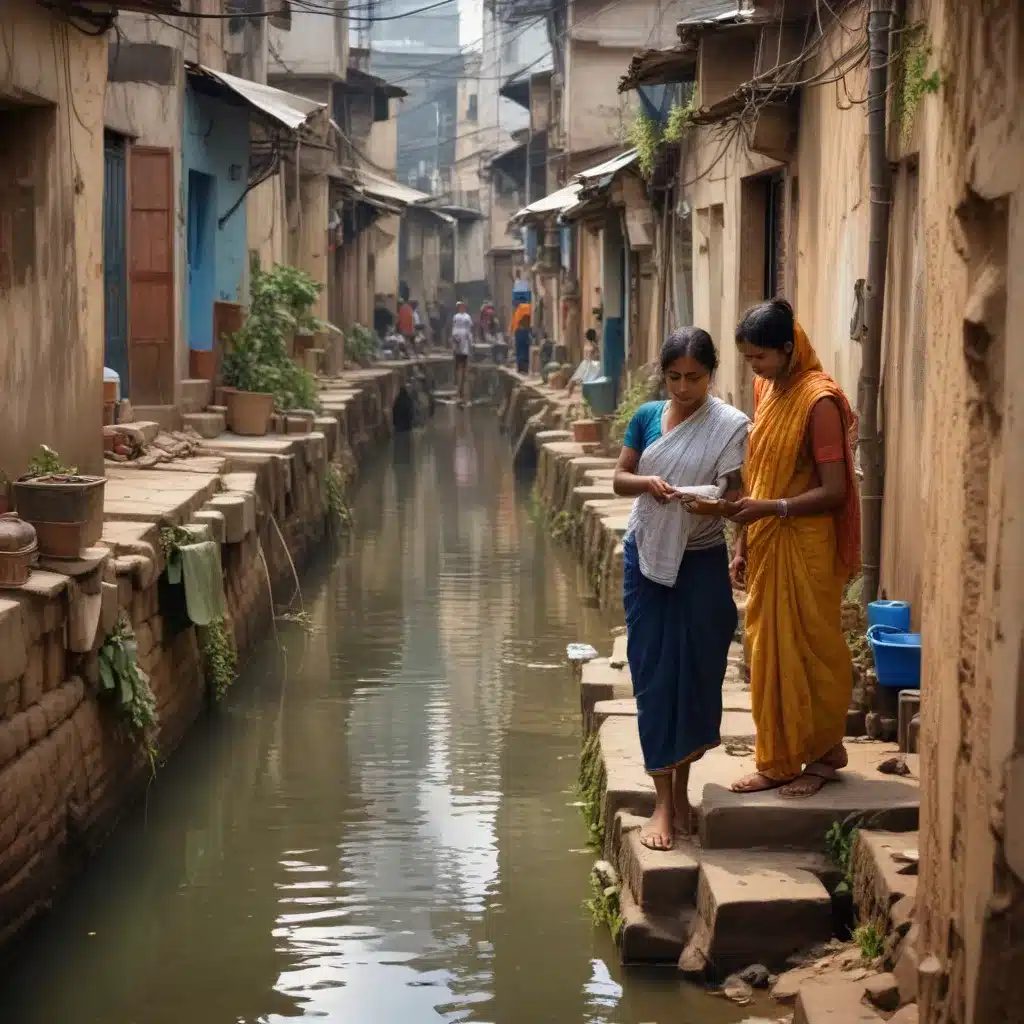
The Urgent Need for Water Quality Monitoring and Advocacy
Access to safe, reliable drinking water remains an elusive goal for many communities across the developing world. This is especially true in urban slums, where rapid population growth, poor infrastructure, and limited municipal resources combine to create severe water quality and sanitation challenges. Hyderabad, the capital city of the Indian state of Telangana, is no exception. Home to over 9 million people, Hyderabad’s sprawling slums are often left behind when it comes to basic water and sanitation services.
Contaminated water supplies and inadequate sanitation facilities pose grave health risks for slum residents. Waterborne illnesses like diarrhea, typhoid, and cholera are common, leading to high rates of child mortality and morbidity. Women and children bear the brunt of these burdens, spending hours each day fetching water from distant, often polluted sources. Additionally, the lack of proper wastewater treatment contributes to environmental degradation, with wastewater and solid waste often accumulating in open drains and waterways.
To address these critical issues, a holistic, community-driven approach is needed – one that empowers residents to monitor water quality, advocate for improved services, and work alongside government agencies and civil society organizations. Citizen science and participatory community monitoring hold immense potential to drive positive change.
Equipping Slum Communities with Water Quality Monitoring Skills
Traditional water quality testing and surveillance in Hyderabad’s slums have largely been top-down, relying on sporadic, limited sampling by government agencies. This approach fails to capture the full extent of contamination, leaving many households unaware of the risks they face. A shift towards community-led monitoring can fill these gaps and provide a more comprehensive and responsive system.
By training slum residents, particularly women and youth, in simple, low-cost water quality testing techniques, we can empower them to regularly assess the safety of their drinking water sources. Initiatives like the “Community Water Testing” project, implemented by the non-profit organization Dhan Foundation, have demonstrated the feasibility and impact of this approach. Community members were equipped with field test kits to measure parameters like pH, turbidity, and the presence of bacteria. Armed with this knowledge, they were able to identify contaminated sources, advocate for repairs, and monitor the effectiveness of water treatment efforts.
Such citizen science programs not only generate critical data but also build community awareness and agency. When residents understand the quality of their water and the associated health risks, they are better positioned to demand accountability from service providers and hold local authorities responsible. This, in turn, can spur much-needed investments in water infrastructure and sanitation improvements.
Amplifying Community Voices through Participatory Monitoring and Advocacy
Beyond individual water quality testing, slum communities can take a more holistic, systems-level approach to monitoring and advocacy. Participatory community monitoring (PCM) initiatives bring together diverse stakeholders – residents, civil society organizations, local government representatives, and technical experts – to collaboratively assess water and sanitation conditions, identify challenges, and develop solutions.
In Hyderabad, the organization Jal Seva Foundation has pioneered a successful PCM program in several slum settlements. Through a combination of water quality testing, household surveys, and community mapping, residents have built a comprehensive understanding of their local water and sanitation landscape. This evidence has then been used to engage with municipal authorities, highlighting priority areas for infrastructure upgrades and service improvements.
The power of PCM lies in its ability to amplify community voices and foster meaningful, ongoing dialogue between citizens and decision-makers. By elevating the perspectives and needs of slum dwellers, these initiatives ensure that water and sanitation policies and investments are responsive to local realities. Moreover, the collaborative nature of PCM helps to build trust and collaboration between communities and government agencies, paving the way for more effective, sustainable solutions.
Leveraging Data and Advocacy for Systemic Change
The data generated through citizen science and participatory community monitoring can be a powerful tool for advocacy and driving systemic change. By documenting the extent of water quality issues and their impacts on public health, slum communities can build a compelling case for increased government attention and resource allocation.
Organizations like Arghyam, a non-profit focused on water and sanitation, have successfully helped slum-based groups utilize this data for advocacy. Through workshops and technical assistance, they have guided community members in analyzing their findings, crafting compelling narratives, and engaging with policymakers and elected officials. This has resulted in tangible improvements, such as the installation of new water treatment systems and the expansion of piped water networks in some of Hyderabad’s most underserved neighborhoods.
Beyond local advocacy, the data collected through citizen science and PCM can also inform broader policy and planning processes. By aggregating and analyzing information from multiple slum communities, trends and systemic issues can be identified, providing a stronger evidence base for citywide and statewide water and sanitation strategies. This can help ensure that investment and service delivery decisions are guided by the real needs and experiences of the urban poor.
Towards a More Resilient and Equitable Water Future
The challenges facing Hyderabad’s slum communities are daunting, but the power of citizen science and community-led monitoring holds immense promise. By equipping residents with the skills and platforms to assess their water quality, advocate for improved services, and collaborate with authorities, we can move towards a more resilient and equitable water future.
Key to the success of these initiatives is a commitment to sustainability and scalability. Water quality monitoring and advocacy efforts must be embedded within existing community structures and organizations, ensuring long-term ownership and continuity. Collaboration with academic institutions, civil society groups, and government agencies can also help to institutionalize these practices and secure the necessary resources and technical support.
As we work towards the Sustainable Development Goal of universal access to safe and affordable drinking water, the experiences and insights from Hyderabad’s slum communities can offer valuable lessons for cities across the developing world. By empowering citizens and fostering collaborative action, we can transform water and sanitation challenges into opportunities for inclusive, community-driven development.

